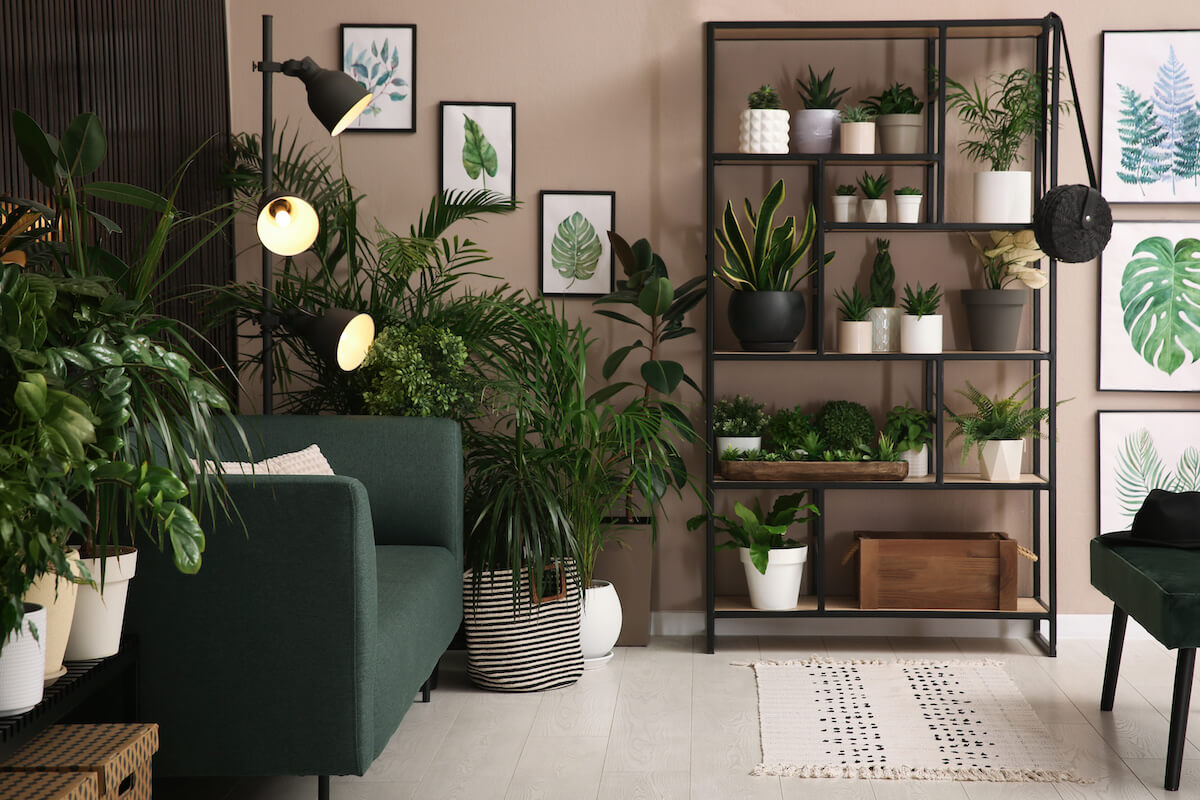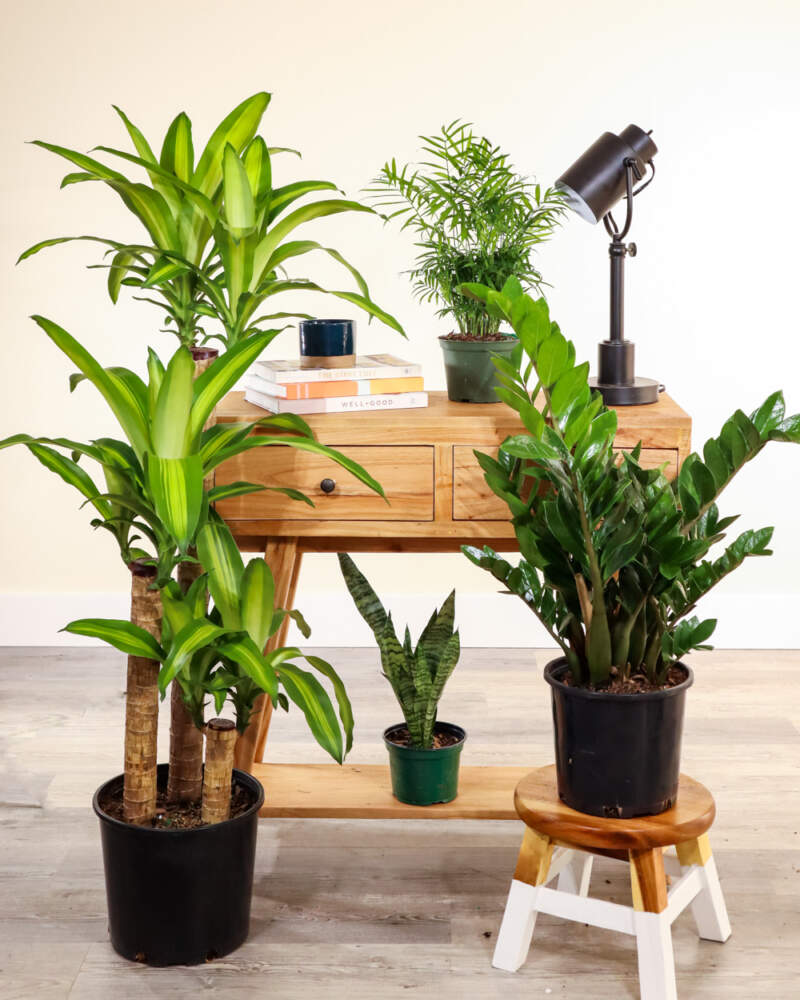Best Low-Light Indoor Plants for Creating a Relaxing and Green Environment
Best Low-Light Indoor Plants for Creating a Relaxing and Green Environment
Blog Article
Transform Your Home With Beautiful Low-Light Indoor Plants and Their Benefits
Integrating low-light interior plants into your home can substantially enhance both the environmental and aesthetic top quality of your home. These plants, which grow in dark conditions, offer not just as decorative components but additionally as natural air cleansers, making them perfect for city dwellers or those with limited sunshine direct exposure. As we explore the various sorts of low-light plants and their advantages, you might find unusual means to incorporate them into your home that can transform your environments in means you might not have prepared for.
Advantages of Low-Light Plants
Low-light plants provide many benefits for interior atmospheres, making them an excellent selection for both novice and seasoned gardeners. One of the main benefits is their versatility to low-light problems, permitting people to boost their space without the need for comprehensive sunshine exposure. This characteristic makes them excellent for apartments, workplaces, and various other locations with minimal all-natural light.

Moreover, incorporating low-light plants into home decoration can raise the aesthetic charm of a space. Their lush foliage and varied textures create a relaxing ambience, adding to total health. The visibility of plant has been linked to reduced stress degrees and improved efficiency, making low-light plants a practical choice for boosting both psychological and physical health in interior settings.
Leading Low-Light Indoor Plants
While many interior plants thrive in intense light, a number of varieties are especially well-suited for low-light problems, making them optimal for numerous indoor rooms. One prominent selection is the Snake Plant (Sansevieria), recognized for its striking upright leaves and strength, requiring marginal care. An additional exceptional option is the Pothos (Epipremnum aureum), which includes heart-shaped leaves and can track wonderfully from racks or hangers, growing in low light and adding a lavish touch.
The ZZ Plant (Zamioculcas zamiifolia) is celebrated for its shiny fallen leaves and ability to hold up against overlook, making it excellent for busy way of livings. Similarly, the Tranquility Lily (Spathiphyllum) not just tolerates reduced light but likewise generates sensational white blossoms, boosting any room's visual.
For a distinct touch, think about the Cast Iron Plant (Aspidistra elatior), which without a doubt lives up to its name, thriving in the darkest corners of your home. The Chinese Evergreen (Aglaonema) uses a selection of fallen leave patterns and shades while being exceptionally forgiving in low-light conditions. These plants not only beautify indoor environments but also contribute to air purification, improving your living area.
Care Tips for Low-Light Plants

Sprinkling practices are vital; these plants often choose somewhat completely dry conditions. Overwatering can result in root rot, so make sure that the leading inch of soil is dry before watering once again. Usage pots with water drainage openings to allow excess moisture to leave.
Moisture is an additional vital element. Numerous low-light plants, such as ferns and tranquility lilies, advantage from greater moisture degrees. To raise moisture, take into consideration misting the leaves or putting a tray of water near the plants.
Fertilizing needs to be come close to with care. Throughout the growing season, utilize a thinned down, balanced liquid fertilizer on a monthly basis to sustain development, yet stay clear of feeding throughout the inactive cold weather.

Innovative Ways to Present Plants
Indoor plants can work as exciting focal points in any type of space, enhancing both visual charm and ambiance. Creative displays can raise the visual effect of low-light plants, making them an essential part of your home decoration. One efficient approach is to utilize tiered plant stands, which enable you to showcase numerous plants at varying heights while taking full advantage of read review flooring room.
Hanging planters are another innovative option, producing a sense of depth and drawing the eye up. Take into consideration macramé wall mounts or wall-mounted racks to present a distinct structure and style.
For a much more structured technique, usage geometric terrariums or glass containers to house your plants, including a modern-day touch to your indoor garden. You can likewise repurpose vintage items, such as teacups or wooden crates, for an eclectic display screen that mirrors your individuality.
Enhancing Home Setting With Plants
Incorporating low-light plants right into your home not only improves visual appeal but additionally adds significantly to the total setting. These plants act as natural design elements, introducing a feeling of harmony that can change any type of room. The presence of plant promotes a soothing atmosphere, which is specifically valuable in high-stress settings such as home workplaces or living areas.
Low-light plants, such as snake plants, pothos, and ZZ plants, are not just cosmetically pleasing however also boost interior air quality by filtering system toxins. This double function boosts the atmosphere even more, creating a much healthier space (Best low-light indoor plants). The critical positioning of these plants can likewise affect the understanding of space; for example, high plants can draw the eye upwards, making ceilings appear greater and spaces much more sizable
Additionally, varying textures and shades of foliage add depth to interior decoration, enabling imaginative expression in home styling. Whether positioned on shelves, in edges, or as focal points, low-light plants can elevate the state of mind of any area. In summary, including these plants into your home is an effective means to promote a cozy, welcoming ambience while enjoying the advantages of enhanced air quality and visual flexibility.
Verdict
Incorporating low-light indoor plants right into home environments supplies many advantages, consisting of enhanced aesthetic appeal and enhanced air quality. These durable plants, such as the Serpent Plant and Tranquility Lily, require minimal light and maintenance, making them ideal for varied lifestyles. Their capability to filter toxins contributes to a much healthier home, while their different appearances and shades enrich interior decoration (Best low-light indoor plants). Inevitably, the incorporation of low-light plants fosters a serene and inviting atmosphere, transforming click resources any type of home right into a serene oasis.
While numerous interior plants prosper in brilliant light, a number of types are especially appropriate for low-light conditions, making them suitable for different interior rooms. One reliable approach is to utilize tiered plant stands, which enable you to showcase multiple plants at varying elevations while optimizing floor room.
Low-light plants, such as serpent plants, pothos, and ZZ plants, are not just visually pleasing however also improve interior air high quality by filtering system toxins. Best low-light indoor plants. The calculated placement of these plants can also affect the understanding of area; for instance, high plants can draw the eye up, making ceilings appear higher and areas a lot more roomy
These resilient plants, such as the Serpent Plant and Peace Lily, require marginal light and upkeep, making them appropriate for varied way of lives.
Report this page